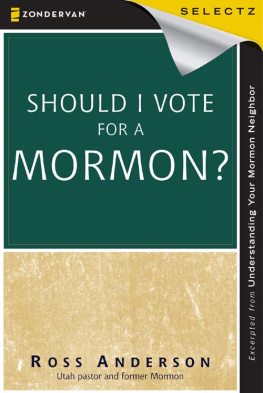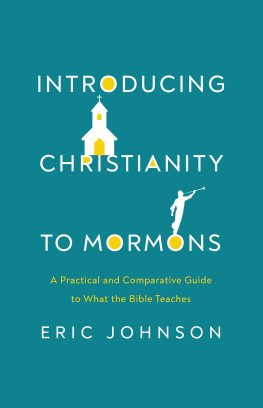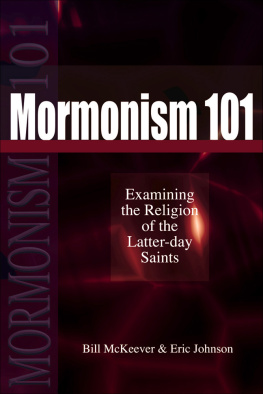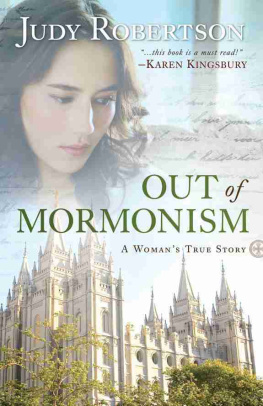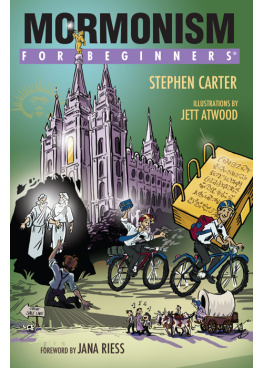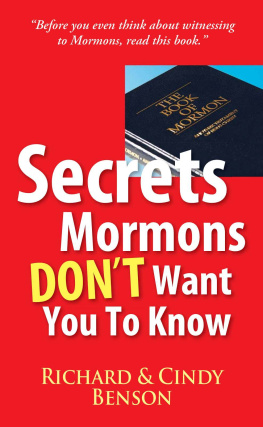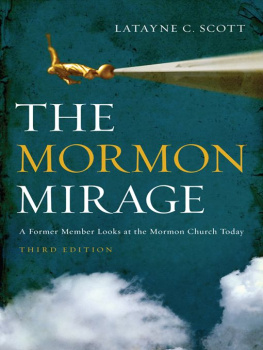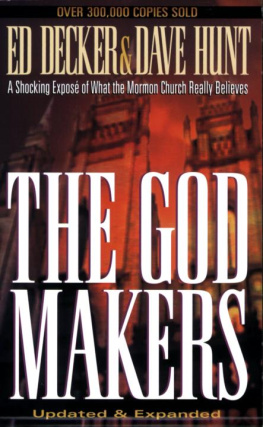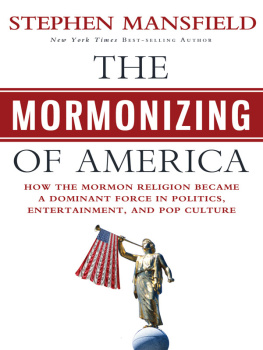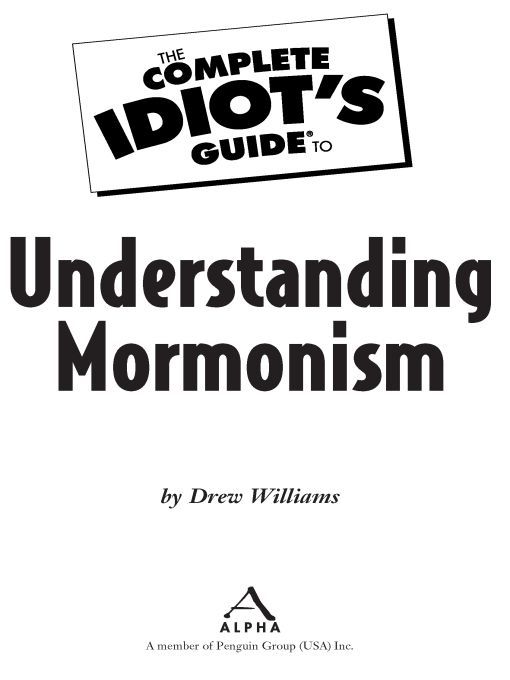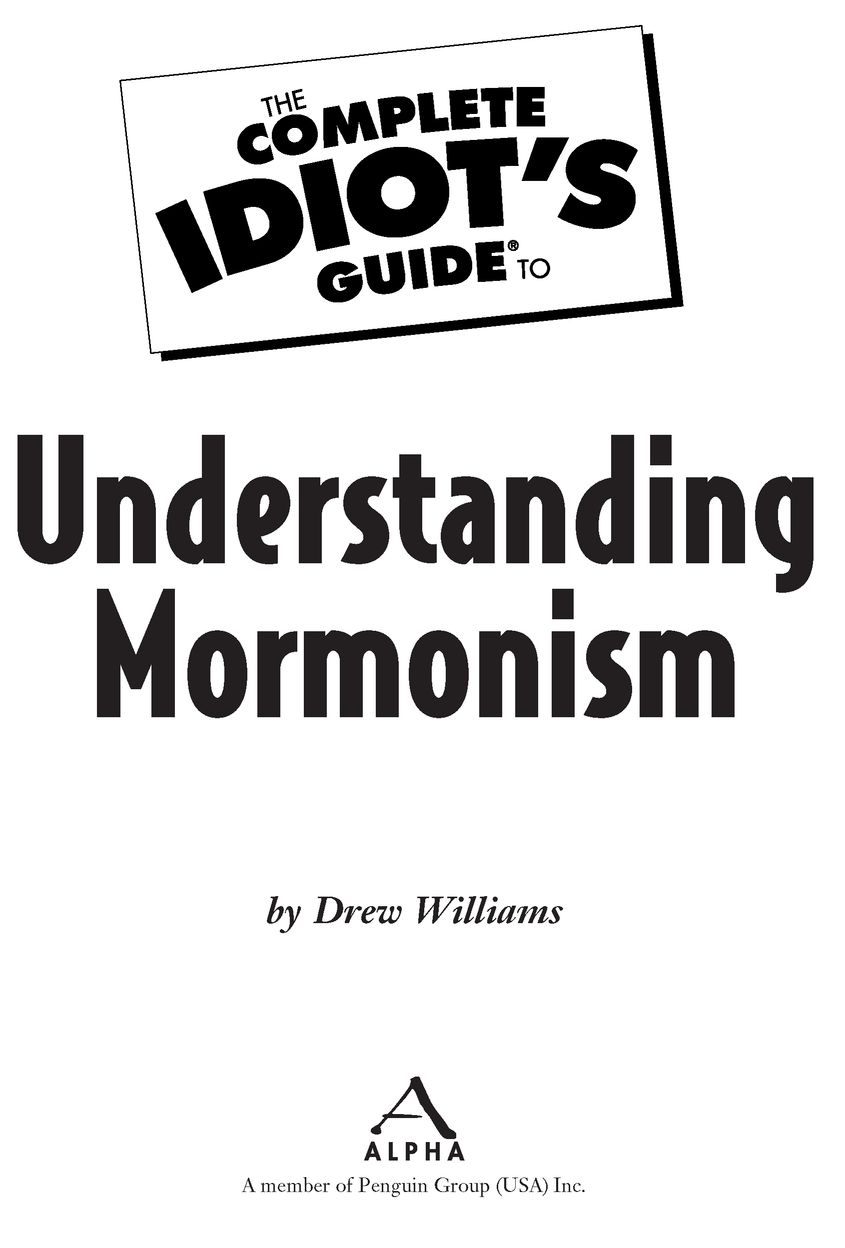Table of Contents
For my wife, Carol, who is my greatest hero; and my adoring children, my favorite fans!
For Thomas Johnson, who was my role model in righteousness; and to Leo and Scott
the first Miracles in my life.
And finally, for anyone who ever wondered about the true meaning of life, and what
the heck were supposed to do while were here.
Foreword
When I was a high school student, some of my best friends were Mormons (or, as they preferred to be known, LDS). I was a life-long Catholic, and proud of it, but my interests were more compatible with the Mormon kids I knew than with some of the rowdier party people. My Mormon friends, Walt Denham, Liz Foley-Johnson, Trey Matson, and Lori Stapley, tolerated me, their gentile friend, and made me feel comfortable around them. When they got to know me better, they started to talk to me about their church.
Unfortunately, I wasnt a very good listener at first.
Although I had been raised a staunch Catholic, I knew very little about religion and religious histories. I believed in God, of course, but my conception of God was something I had personally concocted, something in conflict with most of the basic principles I had been taught in Catholic catechism. Unlike my Mormon friends, I had little interest in religion, so their attempts to engage me in religious conversations usually ended in frustration for me and for them.
As I got older and more mature, and as the good example of my Mormon friends began to have a greater influence on me, I was more open to their attempts to talk about their religion and their own faith in it. My willingness, though, didnt make me a good audience. The basic principles of the LDS Church as described by my teenage Mormon friends were too alien to my Catholic brain to be comprehensible. I wasnt always intentionally obtuse in these conversationsalthough sometimes my stubbornness made me resist their missionary approachesbut even when I wanted to understand their religious explanations, I couldnt. Despite their good intentions, my Mormon friends didnt have the experience or the resources available to them to present Mormon/LDS principles to me in ways that I could understand.
Still, something about these kids, these good-hearted, clean-living kids, made a life-long impression on me. I liked them, and I wanted to learn more about what it was that made them the way they were.
In my senior year in high school, Brigham Young University, the largest privateand Mormonuniversity in the United States, offered me a football scholarship. On my recruiting visit there, the beautiful campus, nestled at the base of Utahs Wasatch Mountains, and the wholesome environment won me over. I came home and announced that I would go to college at BYU. And not long after that announcement, I began meeting with the Mormon missionaries. Just weeks before I left for college, I was baptized a member of the Church of Jesus Christ of Latter-day Saints. I became a Mormon.
My Mormon friends were influential in my conversion, but I sometimes wonder if our conversations about the LDS Church would have been more fruitful if we could have referred to a basic, easy-to-read guide to their religion. This book probably would have saved us all a lot of time, frustration, and arguing.
The Complete Idiots Guide to Understanding Mormonism is an accessible and comprehensive overview of Latter-day Saint doctrine and history, mingled with humor, that will be a handy guide to the LDS religion for non-Mormons and Mormons alike, whether or not theyre complete idiots.
I enjoyed the logical, clear format of the text that made it easy for me to find the answers I was looking for. In addition to providing an easy-to-understand discussion of basic LDS beliefs and history, Drew Williams has integrated snippets of popular Mormon culture.
I wish I could have read this book 30 years ago.
Dr. Chris Crowe, English department, Brigham Young University
Introduction
Welcome to The Complete Idiots Guide to Understanding Mormonism. The intent of this book is to provide you with a fundamental understanding of the origins, challenges, and practices of the Church of Jesus Christ of Latter-day Saints. By the way, members of the Church have often been referred to as Mormons over the years. Recently, however, Church authorities have suggested moving away from this term, encouraging reference to the LDS Church or LDS people. I try to heed their advice throughout this volume, but youll still see the term Mormon show up at appropriate times.
When I was invited to write this book, I was immediately overtaken by this awesome responsibility. My LDS friends reminded me that I would be representing not only the fastest growing Christian religion in America, but also the nearly 12 million people who are part of the LDS Church worldwide. It has been a great opportunity and honor to be asked to represent the LDS faith on this project, and although I have spent quite a bit of time in research and development of the subjects included, its impossible to cover everything. This book offers an introduction to Mormonism, from the point of view of someone who has lived on both sides of the baptismal font. If you want to dig deeper into LDS culture, I encourage you to go to the Churchs website at www.lds.org, or check out some of the books I list in Appendix B.
There are many reasons for the increased interest in Mormonismor Latter-day Saint beliefs. The LDS Church has become more visible than ever before over the past five years, especially due to the popularity of current LDS leader Gordon B. Hinckleya regular on Larry King Live (Larry is married to an LDS woman, by the way)and probably because of the hosting of the 2002 Winter Olympics in Salt Lake City. As well, there are more LDS people living outside the United States than within.
And of course, we still have Donny and Marie!
One reason for the increased interest in LDS beliefs surrounds the Churchs focus on the family. Although the LDS lifestyle and family traditions are not new to the world, interest in that lifestyle seems to be increasing proportionate to the impact of negative influences on families throughout the world. This book will spend quite a bit of time discussing LDS family values.
What Youll Find in This Book
Christian views of God, and how we fit into the eternal equation, have varied over the centuries since Jesus walked the earth, and it is still a popular subject of religious debate. Many Christians may believe things that others in their congregations might not agree with or have answers to. This can add to the confusion about who we are as children of an eternal being, where we came from, and why were all here. In Part 1, The Relationship Between God and Man, we examine the life of Jesus Christ and God, and the LDS concept of the Eternal Progression of man from the origins of our spirits, through mortality, and into the afterlife.
A unique characteristic within the LDS culture is the concept of continued revelation from God. Latter-day Saints believe that God still talks to the children of the world, and that the heavens are not closed. In Part 2, The Word of God Revisited, we explore important aspects of the Old and New Testaments, as contained in the King James Version of the Holy Bible. We also look at the lives of the early apostles, and how an important tenet of LDS doctrinethe Apostasyaffected the stopping of Gods ordained church from existing on the earth for a period of time.


